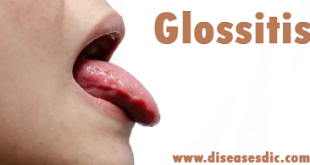Definition
Neuromyelitis Optica (NMO), also known as Devic’s disease, is an autoimmune disorder in which immune system cells and antibodies primarily attack the optic nerves and the spinal cord. NMO occurs when your body’s immune system reacts against its own cells in the central nervous system, mainly in the optic nerves and spinal cord, but sometimes in the brain. The damage to the optic nerves produces swelling and inflammation that cause pain and loss of vision; the damage to the spinal cord causes weakness or paralysis in the legs or arms, loss of sensation, and problems with bladder and bowel function.
There are two main types of Neuromyelitis Optica (NMO)
Relapsing Neuromyelitis Optica
There is an initial attack of optic neuritis and transverse myelitis, and then subsequent attacks over a period of several years. Sometimes the patient cannot recover fully from the neurological damage the attacks cause to the optic nerve and/or spinal cause and the damage is permanent, causing disability. This type of neuromyelitis optica affects females more frequently than males.
Monophasic Neuromyelitis Optica
Few attacks are experienced over a period of days or weeks. There are no subsequent attacks. This form of neuromyelitis optica affects both sex equally.
History
In 1884 Eugene Devic reported the case of 45-year-old French woman seen at the Hotel-Dieu Hospital of Lyon because of intractable headache and depression in addition to general asthenia. One month later she developed urinary retention, complete paraplegia and blindness, and died a few weeks later. Autopsy disclosed severe demyelinating and necrotic lesions extending for 4-5 cm length in the lower thoracic and lumbar spinal cord.
Devic presented this case at the First Congress of Internal medicine in Lyon, and mentioned 16 other cases reported in the literature. In his paper Devic proposed the identity of the pathological process involving both the spinal cord and the optic nerves, named the syndrome ‘neuro-myelite optique’ or ‘Neuroptico-myelite’, and discussed its relationship with “Multiple Sclerosis”.
Epidemiological aspects of Neuromyelitis Optica (NMO)
The incidence and prevalence of NMO and NMO spectrum disorders (NMOSDs) are poorly characterized. Population-based studies from Japan, Cuba, Denmark, Mexico, and the French West Indies suggest incidence rates of 0.053 to 0.4 per 100 000 patient-years and prevalence rates of 0.52 to 4.4 per 100 000 people. In the United States, NMO prevalence is estimated to be approximately 1% to 2% that of MS, suggesting that there may be 4000 to 8000 patients.
Causes
With NMO, immune system attacks a substance in a body called myelin the insulation around nerves. Specifically, the myelin cells in the spinal cord and optic nerves are attacked. Usually, people with NMO have flare-ups of the disease that may strike months or years apart. Between these flare-ups, people may have some recovery.
Symptoms of Neuromyelitis Optica (NMO)
Each person with NMO will experience different symptoms and require individually tailored care and support. Some of the main symptoms of NMO include:
- Muscle weakness – reduced strength in one or more muscles that can affect mobility
- The eyes become less sensitive to colors.
- Swelling of the optic disc.
- Nerve pain – which can be a sharp, burning, shooting or numbing pain
- Spasms and increased muscle tone – from nerve damage that affects muscle control
- Bladder, bowel and sexual problems
Optic neuritis
Optic neuritis is inflammation of the nerve that leads from the eye to the brain. It causes a reduction or loss of vision, and can affect both eyes at the same time. Other symptoms of optic neuritis include eye pain, which is usually made worse by movement, and reduced colour vision where colours may appear ‘washed out’ or less vivid than usual.
Transverse myelitis
Transverse myelitis is inflammation of the spinal cord. It causes weakness in the arms and legs which can range from a mild ‘heavy’ feeling in one limb, to complete paralysis in all four limbs. It may cause numbness, tingling or burning below the affected area of the spinal cord and increased sensitivity to touch, cold and heat. There may also be tight and painful muscle contractions (known as tonic muscle spasms).
Possible complications of Neuromyelitis Optica (NMO)
Breathing problems – in severe cases muscle weakness may be such that the patient needs artificial ventilation.
- Depression – the mental strain of living with NMO, especially if symptoms are severe, can lead to clinical depression.
- Erectile dysfunction and sexual dysfunction – some men may experience problems getting or maintaining an erection. Both men and women may experience problems reaching orgasm.
- Fragile bones – long-term steroid therapy can lead to osteoporosis.
- Paralysis – in severe cases when there is damage to the spinal cord, there can be limb paralysis.
- Vision loss – in severe cases there can be damage to the optic nerve, leading to permanent loss of vision.
Diagnosis and Test
NMO is not an easy condition to diagnose because it presents signs and symptoms which are often similar to those found in other diseases, such as:
- MS (multiple sclerosis)
- ADEM (acute demyelinating encephalomyelitis)
- SLE (systemic lupus erythematosis)
- MCTD (mixed connective tissue disorder)
- Some inflammations caused by viruses
- Paraneoplastic optic neuropathy (inflammation linked to cancer)
The doctor will have to carry out some tests to rule out the above-mentioned conditions.
- Blood test – the aim here is to find out whether the antibody NMO IgG is present. A positive blood test result usually means that the patient risks having multiple attacks of transverse myelitis.
- Lumbar puncture test (spinal tap) – a small amount of fluid surrounding the brain and spinal cord is collected. Results will indicate whether levels of white blood cells are high, and also whether specific proteins linked to NMO or other conditions are present.
- MRI (magnetic resonance imaging (MRI) scan – this scan can show up any damage to nerves and their surroundings (lesions). MRI scans of NMO patients hardly ever reveal any brain abnormalities, but will show up lesion consisting of three or more segments of the spinal cord. This type of spinal cord lesion makes it easier for the doctor to rule out multiple sclerosis.
Treatment and Medications
There is no cure for Neuromyelitis Optica (NMO) at this time, and no medications have been specifically approved to treat it. The standard of care for an initial attack of NMO includes the following:
- Intravenous (into the vein) high-dose corticosteroids (methylprednisolone)
- Plasma Exchange (PLEX) if no improvement occurs with corticosteroids. The goal of PLEX is to lower the level of NMO-IgG in the blood.PLEX involves removing blood from the body through a needle and tubing. Through a series of steps, the plasma (the liquid part of the blood) is separated from blood cells and replaced with an artificial plasma substitute; the plasma substitute and blood cells are combined and returned to the body through an intravenous line. The procedure lasts several hours and may be repeated multiple times over a number of days.
The following medications are used for maintenance therapy:
- Mycophenolate mofetil (CellCept)
- Rituximab (Rituxan)
- Azathioprine (Imuran, Azasan)
 Diseases Treatments Dictionary This is complete solution to read all diseases treatments Which covers Prevention, Causes, Symptoms, Medical Terms, Drugs, Prescription, Natural Remedies with cures and Treatments. Most of the common diseases were listed in names, split with categories.
Diseases Treatments Dictionary This is complete solution to read all diseases treatments Which covers Prevention, Causes, Symptoms, Medical Terms, Drugs, Prescription, Natural Remedies with cures and Treatments. Most of the common diseases were listed in names, split with categories.








I have nmo let me tell you I’ll don’t wish this on anyone